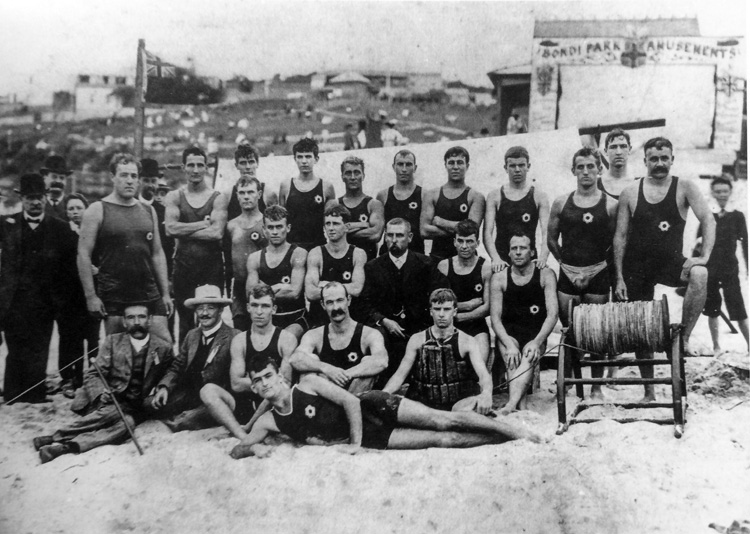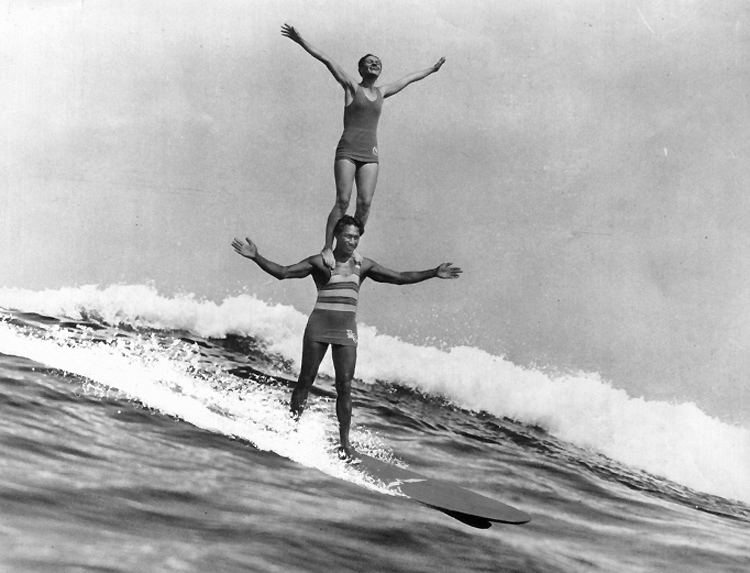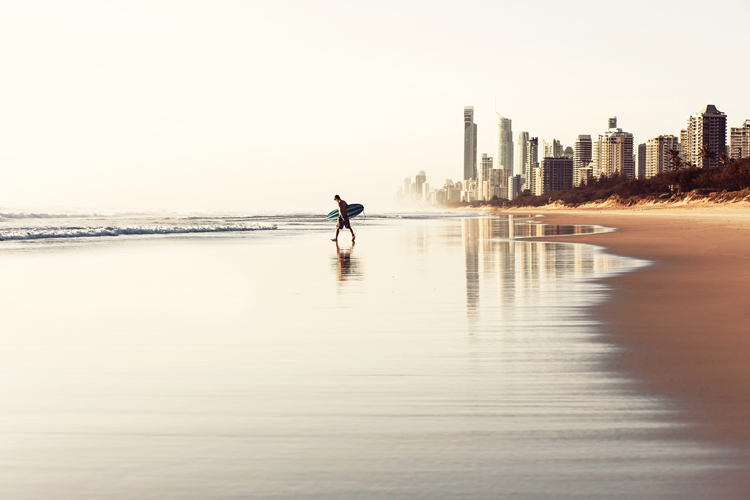Australia is one of the greatest surfing nations and the largest surf country in the Southern Hemisphere. The giant island gets swells from all directions, and it is no wonder that the sport of surfing has ancient roots Down Under.
To understand how surfing has evolved around the world, we need to look at the timeline. There are key dates in Australian surfing history, and they all shaped what the sport is today.
In 1914, Duke Kahanamoku visited Australia and opened the first chapter in the history of surfing Down Under.
But the truth is that, back in the day, surfing was not entirely new to Australians.
There were already people challenging the surf with their bodies and using smaller paipo and belly boards to ride the waves.
The big island at the bottom of the world has been crazy about surfing since the 19th century.
Knowing how to ride a wave is a common skill in Australia, and that is why, for many, it is the ultimate surfing destination.
Australia has between 2.5 and 3.5 million active surfers.
One in three wave riders is a woman, and the country offers thousands of above-average surf breaks from Sydney and Margaret River to Darwin and Torquay.
But what if the first Australian surfers were Indigenous? Could surf lifesavers be the first real surfers? Was bodysurfing the first wave-riding activity in Australia?
Some of these questions may never get clear answers, but the Australian surfing timeline helps us understand why the sport is so popular Down Under.
1867: Charles Steedman publishes the book "Manual of Swimming," which features a chapter titled "Native Swimming, Wave Mechanics and Surfboards";
1903: The prohibition of ocean bathing in daylight hours is lifted;
1903: Manly Beach holds the first demonstration of surf lifesaving methods;
1906: The Bondi Surf Club is founded;

1907: Nine clubs form the Surf Bathing Association;
1909: "Surf Sports at Manly," the first documentary film on a surf demonstration, is screened around the country;
1910: The Manly Surf Carnival attracts hundreds of spectators with surf shooting by men and women, surf boat races, and rescue drills;
1911: Author Frank Fox writes about the "hundreds of thousands of people - men, women, and children - surf-bathing or paddling on the sands";
1912: Tommy Walker rides a surfboard at the Freshwater Carnival;
1913: Henry Thomas McLaren creates a hollow plywood surf ski;
1914: Duke Kahanamoku visits Australia and rides waves in front of thousands of spectators;
1915: Duke Kahanamoku goes tandem surfing with 15-year-old girl Isabel Letham;

1915: One week after Duke's surfing performance, Tommy Walker gives another surfboard demonstration at Yamba's Main Beach;
1919: Claude West becomes Australia's first national surfing champion;
1923: Charles Snow McAlister performs a headstand and wins the Newcastle surfboard title;
1923: The Surf Bathing Association of NSW changes its name to Surf Life Saving Association;
1927: The Duke and Duchess of York visit Manly and enjoy a display of surf lifesaving and beach sports;
1933: Ernest Smithers launches the surf-o-plane, an inflatable rubber surf mat;
1934: Frank Adler shapes The Racing 16, Australia's first hollow board with timber frame and plywood skin;
1938: 200 bathers are surprised by a massive backwash - despite the effort made by 70 lifesavers, five people lose their lives;
1939: German-born Australian Harry Wicke wins the SLSA of Australia Surf Board Championship;
1945: A group of Sydney surfers forms the Australian Surf Board Association;
1948: Billy Reynolds, Ray Young, Serge Denman, Keith Sawyer, and Bruce Agnew paddle their surfboards ten kilometers from Manly to Bondi;
1956: The International Surf Carnival introduces balsa Malibu boards in Australia;
1957: "Service in Sun," a film by Maurice Powers, reveals members of the American and Hawaiian surf lifesaving teams demonstrating the latest surfing techniques on Bondi Beach;
1958: Arthur Lowe publishes "Surfing, Surf-shooting and Surf-lifesaving Pioneering," in which he says he started bodysurfing in 1886;
1960: The first foam surfboards become available in Australia;
1962: George Greenough builds his first low-volume spoon kneeboard;
1963: Midget Farrelly wins the 10th Annual Makaha International Surfing Championships;
1963: Surfing Australia is founded;
1964: Midget Farrelly and Phyllis O'Donnell claim the first-ever World Surfing Championship at Manly Beach in front of 65,000 spectators;
1966: Nat Young wins at Bells Beach and conquers the Australian and the world titles;
1967: Bob McTavish shapes the world's first v-bottom surfboard;
1969: Eric and Lowell Blum release the movie "The Fantastic Plastic Machine";
1969: Doug Warbrick and Brian Singer launch Rip Curl;
1970: Alby Falzon, John Witzig, and David Elfick establish Tracks, Australia's first surf magazine;
1973: Ian Cairns travels to Hawaii with just one surfboard and wins the Smirnoff Pro at Sunset Beach;
1973: Gordon Merchant launches Billabong;
1979: Mark Richards wins his first of four consecutive IPS World Circuit titles;

1984: The first edition of the Malfunction Surf Festival celebrates the longboard revival;
1985: Charles Justin "Snow" McAllister and Mark Richards are the first inductees into the Surfing Australia Hall of Fame;
1986: Tom Carroll signs an exclusive five-year deal with Quiksilver;
1989: Murray and Graeme Smith introduce Abro, an automated, computerized shaping machine;
1992: Mark Sainsbury, credited with inventing the floater, suffers a sudden brain aneurysm and dies at Avoca;
1996: "Litmus: A Surfing Odyssey," a movie by Andrew Kidman, marks a new era in modern surfing;
1998: Layne Beachley wins her first of five consecutive ASP World Tour titles;
1999: Mark Occhilupo wins the ASP World Tour title at the age of 33;
2002: The Superbank, a mile-long man-made sandbar installed on the Tweed River mouth, allows surfers to ride waves from Snapper Rocks to Kirra;
2007: Mick Fanning and Stephanie Gilmore win their first ASP World Tour title;
2012: The four-kilometer stretch between Freshwater Beach and Shelly Beach is declared a World Surfing Reserve;
2012: Surfing Australia High-Performance Centre opens at Casuarina, New South Wales;
Interested in knowing more? Get "Australia's Century of Surf" by Tim Baker.
Have we missed a key date in the history of Australian surfing? Send us an email.
